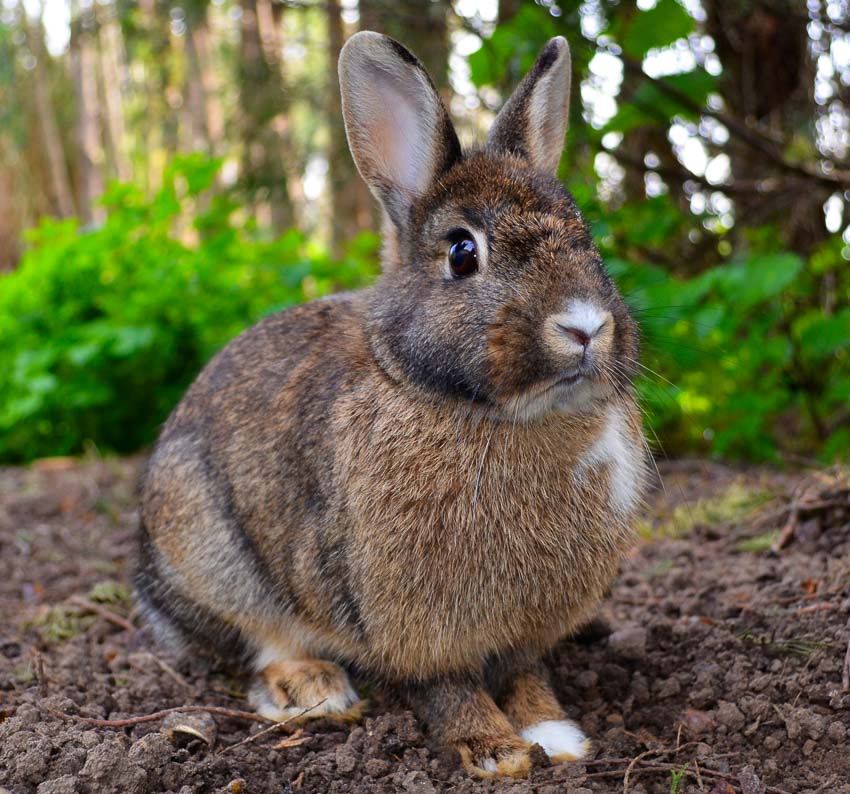Watching adorable, fluffy bunnies in your yard is fun until they destroy your flowers and vegetables. Finding the most effective methods for getting rid of rabbits will save your yard and garden. Learn more about rabbit behavior and how to get rid of rabbits naturally with these tips and tricks.
Understanding Rabbit Behavior and Attraction
Getting rid of rabbits is easier when you have a basic understanding of their behavior. Learn more about rabbit behaviors and what attracts them to your property,
What Attracts Rabbits to Your Property?
Rabbits are at the bottom of the food chain, so they are attracted to places that offer cover and protection from their natural predators, like your yard. Overgrown areas and piles of brush create the perfect hiding spots for rabbits, and they like shrubs, trees, and tall grasses that make it easy for them to move around without being seen.
Rabbits eat almost any vegetation, including the bark of trees and shrubs. They feast on weeds, garden plants, and grass and get most of their water from dew and the plants they consume.
Rabbit Behaviors and Habits
Rabbits are widely adapted to many regions, and their natural habitat includes forests, meadows, deserts, and wetlands.
They are social animals in the wild, usually living in large colonies in underground burrows called warrens. Groups of rabbits can be as few as two or three or as large as several dozen, depending on the resources and terrain that are available to them.
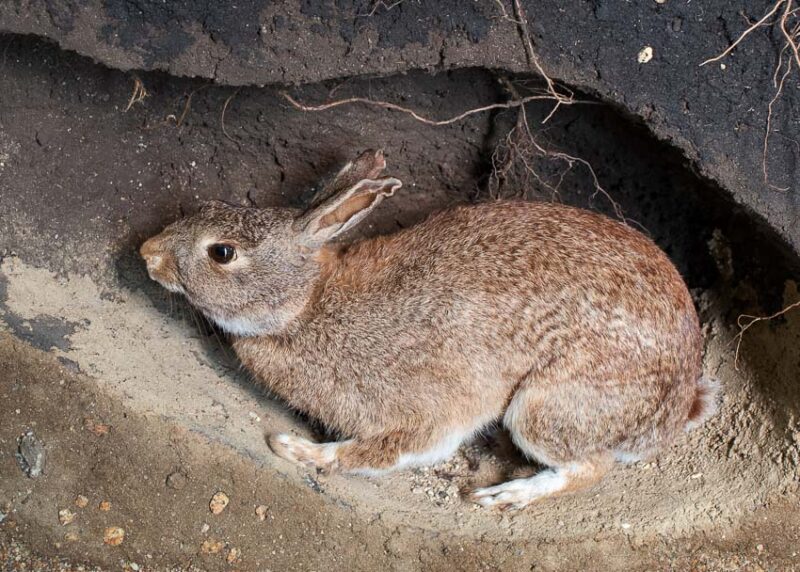
The rabbit’s only defense against being killed by predators is being cautious so they can run and hide. Living in a large group helps them look out for each other, and you may notice some rabbits posted as sentries.
Sentry rabbits stand guard in an upright position, and when they sense a threat, they use their hind leg to thump loudly and alert the other rabbits.
Signs of Rabbit Infestations
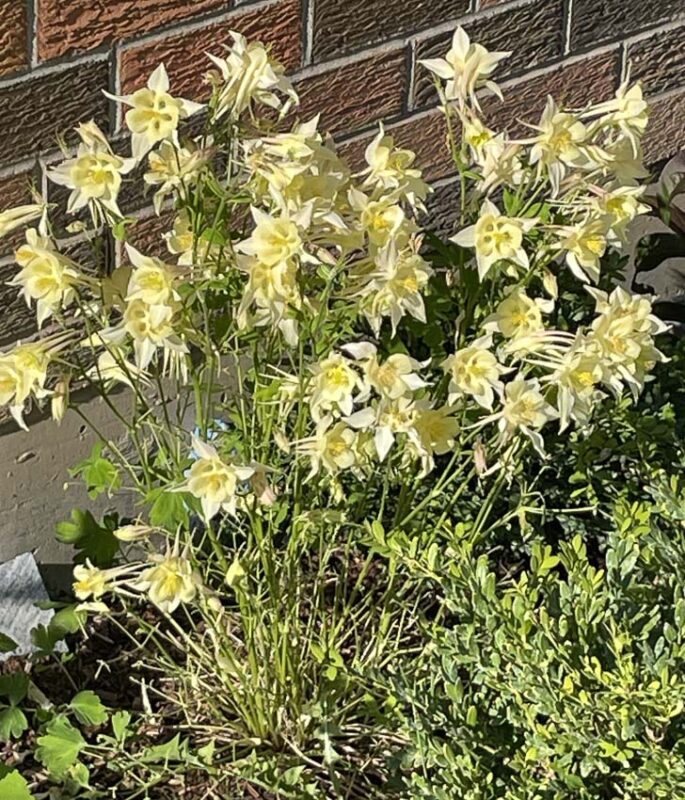
While most people will automatically notice the rabbits running around their yard, there are other signs that you have a rabbit problem.
- Rabbit fur, especially in the spring when they are molting
- Plants that have been stripped to the ground
- Girdling or gnawing on trees
- Rabbit droppings
Effective Ways to Get Rid of Rabbits
Physical barriers and repellents are the most effective ways to get rid of rabbits without killing them. Growing rabbit-resistant plants is another way to enjoy a beautiful yard without harming or discouraging rabbits from your yard.
Physical Barriers and Fencing
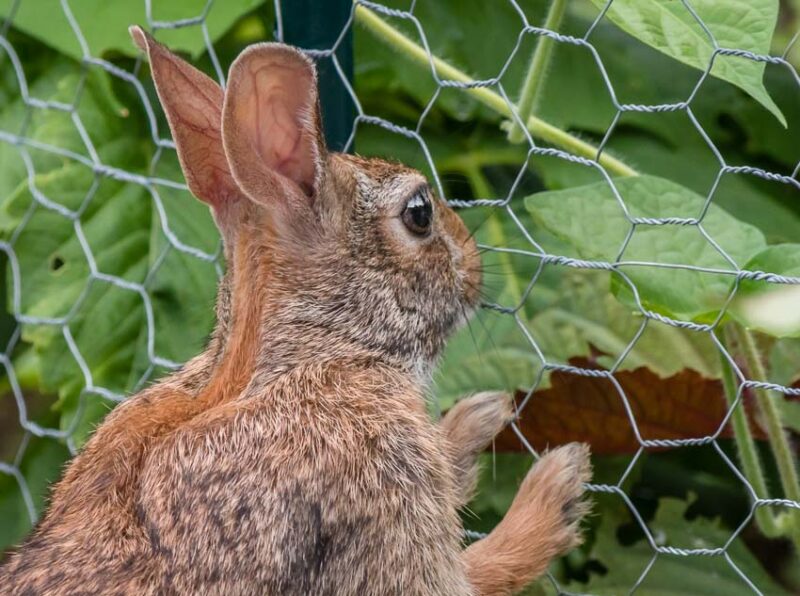
Because rabbits are excellent diggers, they can be trickier to keep fenced out than other nuisance animals, like deer. Still, fencing presents the best overall solution to protect garden plants from rabbits.
To install a rabbit-proof fence, it’s more important to concentrate on keeping them from digging into your garden. The best wire to use for rabbit fences is heavy gauge chicken wire.
Dig a trench at least six inches deep and bury the wire fencing to keep them out. Make your fence at least two feet tall to prevent them from jumping over.
Installing an electric fence around the base of your fences is another option to get rid of rabbits in your garden. The wire should be at least six inches off the ground. Otherwise, the rabbits will walk or hop right over it. If one strand doesn’t work, use another about eight inches higher.
Keep your pet safe! Don’t miss our article on invisible fences.
You can also use fencing around individual plants and trees to keep rabbits out, but make sure it has a small enough mesh. Another option is raised garden beds. As long as they are high enough off the ground, they will be rabbit-proof, and they will work against other pests like groundhogs and slugs.
Repellents and Odor-Based Solutions
There’s a long list of repellents and odor-based solutions that you can use to get rid of rabbits in your yard.
Ammonia
Rabbits are sensitive to predators, and ordinary household ammonia will make them think a predator is nearby. It is less expensive than predator urine and works to repel rabbits. Use ammonia-soaked rags or cotton balls and place them in areas where you usually see rabbits in your yard.
Resoak the rags every week until the rabbits are gone.
Predator urine and decoys
Predator urine is effective at getting rid of rabbits, especially when combined with decoys. Coyotes are one of the most common predators of rabbits, making coyote decoys and predator urine one of the best choices to get rid of rabbits naturally.
Many types of predator urine are available, including wolf, fox, bobcat, and mountain lion. You can also place owl and hawk decoys on fences or garden posts.
Other rabbit repellents
Here are a few strong-smelling substances you can try to deter rabbits:
- Blood and bone meal–these are excellent soil amendments that help deter rabbits
- Homemade cayenne and garlic sprays–easy to make at home with hot sauce, garlic powder, dish soap, and water
- Vinegar sprays–vinegar is useful for repelling many types of animals and insects
- Human hair clippings–ask your local salon to save some for you
- Dog hair–contact a local dog groomer for a supply and spread it around your plants
Rabbit-Resistant Plants and Landscaping
While it’s hard to grow a vegetable garden resistant to rabbits, there are many rabbit-proof plants for landscaping your yard. When you grow these plants, you can sit back and relax. Enjoy these beautiful plants and watch the bunnies play in your yard without worry.
Perrenial and annual flowers
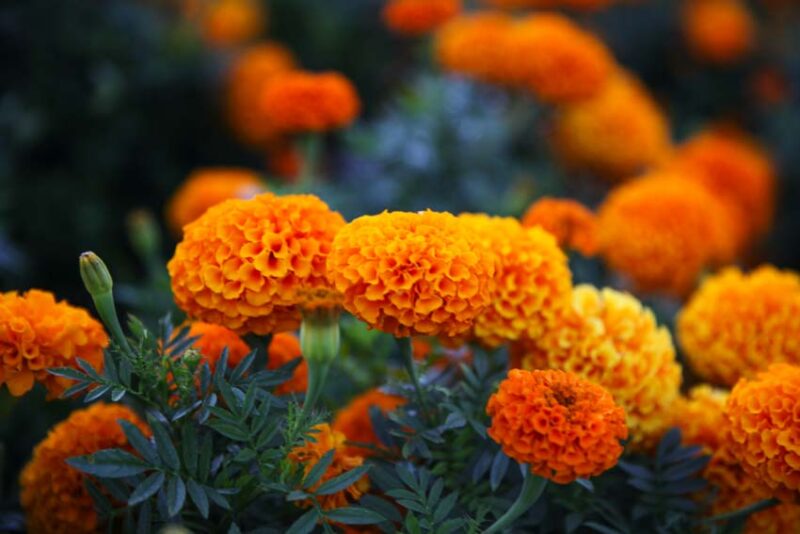
Gorgeous flower beds planted with these annual and perennial flowers will add color to your yard even when you have rabbits.
- Yarrow
- Marigolds
- Geranium
- Chrysanthemum
- Snapdragons
- Columbine
- Astilbe
- Butterfly bush
Herbs
Many herbs are also rabbit-resistant, including rosemary, sage, lavender, basil, thyme, catnip, and oregano.
Shrubs and ornamental grasses
Barberry, boxwood, peonies, rhododendrons, and forsythia are some of the best shrubs for getting rid of rabbits by creating an inhospitable yard. You can also plant ornamental grasses like blue fescue, but stay away from tall grass plants that provide cover.
Trees
There are many species of rabbit-resistant trees, but to be on the safe side, put a ring of wire around young trees in the fall to keep them from being girdled during a long winter with heavy snow.
Natural Predators and Encouraging Natural Deterrence
If you have a lot of rabbits in your yard, you’ve likely seen an occasional predator hunting them. Encouraging natural predators in your yard is an effective natural deterrence method, and it can make your backyard even more appealing and diverse.
Encouraging Predators like Eagles, Hawks, Owls, and Foxes

Attracting wildlife to your backyard is all about creating the right habitat. How do you create a habitat for predators like eagles, hawks, owls, and foxes?
Like any other animal, raptors like hawks and owls need food, water, and shelter. Provide water with bird baths, but make sure they are large enough for bigger birds.
Installing a pond in your yard will encourage many wildlife species, including other animals that raptors prey upon. Bird feeders also attract wildlife that is lower on the food chain, and owls and hawks will find your yard full of easy pickings.
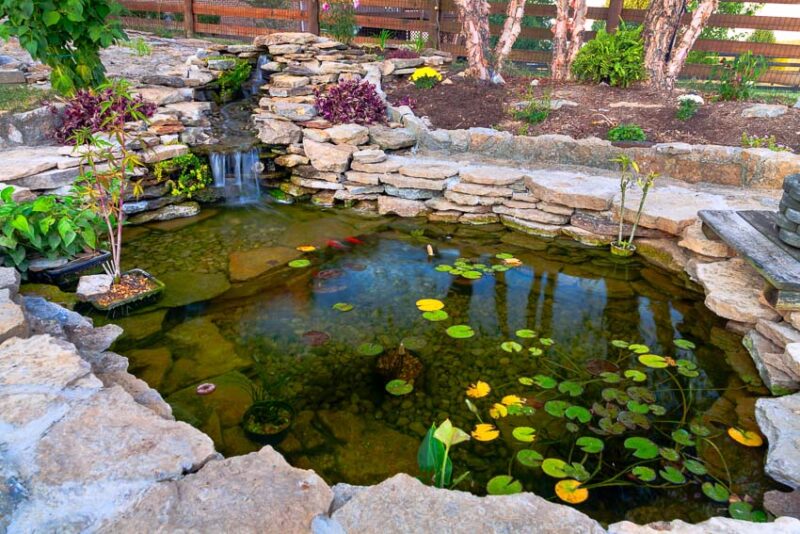
Roosting sites for raptors can include large trees, fence rails, and posts. To encourage them to watch over your garden, install a rail along the top of a tall fence. You can also add nesting boxes for small owls and kestrels on a secluded corner of your property and install large platforms high in the trees for hawks.
Natural Deterrents like Scarecrows and Noise Devices
There are other ways to keep rabbits out of your yard without fences. Natural deterrents like scarecrows and noise devices will scare rabbits and activate their natural instinct to run and hide. Here are some of the best ways to scare rabbits to keep them out of your yard:
- Ultrasonic devices
- Motion-activated sprinklers
- Motion-activated lights
- Pinwheels
- Motion sensor radios and alarms
Additional Information about Rabbits
Learning as much as you can about rabbits provides greater insight into their behaviors, which can help you find the best deterrent methods. Discover interesting facts about common rabbit species, their reproduction and breeding habits, and their habitat and nesting preferences.
Common Rabbit Species
Knowing how to get rid of rabbits is also important because they will ravage your yard and garden. Some species are more prevalent in certain parts of the United States. Hares, which are closely related to rabbits but are a separate species in the same family, can also cause problems for gardeners.
Here are the most common rabbit species presenting as pests in the US:
- Eastern Cottontail (Sylvilagus floridanus)–the most common species in North America, found in the Eastern US to the Great Plains
- Mountain Cottontail (Sylvilagus nuttallii)–has long hind legs and short ears, found in the Western United States and Canada
- Brush rabbit (Sylvilagus bachmani)–a small rabbit with short legs and tail, found in Western coastal regions of the US
- Swamp rabbit (Sylvilagus aquaticus)–the largest cottontail rabbit, found in the swamps and wetlands in the Southern US
Various types of hares
Hares can be just as destructive to your garden as rabbits, but they have different behaviors and don’t usually live in groups. Here are the most common species of hares in the United States:
- Black-tailed Jackrabbit (Lepus californicus)
- White-tailed Jackrabbit (Lepus townsendii)
- Snowshoe Hare (Lepus americanus)
Reproduction and Breeding Habits
The ability of rabbits to reproduce rapidly is well known, and it’s an important survival tactic for the species. Rabbits are promiscuous animals; females produce from three to five litters per season. Their gestation period is 30 days, and they have four to seven young litters. The more abundant their food supply, the more babies they have.
Many animals prey on rabbits, including coyotes, foxes, skunks, ferrets, snakes, and badgers. Unfortunately for rabbits, only about 50% of their babies live long enough to leave the nest. Baby rabbits usually leave the nest at about three weeks when they are the size of a chipmunk. Once rabbits leave the nest, several species of raptors, like hawks and owls, hunt them.
Habitat and Nesting Preferences
Wild rabbits need a variety of habitats for survival. Dense brushy areas and forests provide the best cover, and grassy openings and meadows provide a source of food.
Rabbits dig shallow nests and line them with grass and fur. Their nests can be found in the open or in dense brush piles. Colonies of rabbits live in large warrens, and they can be ten feet deep and over 150 feet wide with several entrances and exits.
How to Get Rid of Rabbits FAQs
How much damage can rabbits cause to my garden?
Rabbits are well known for causing significant amounts of destruction to a garden. One of the worst types of damage caused by rabbits is girdling, which is when they eat the bark around the base of fruit and ornamental trees and kill them.
What are some rabbit-resistant plants?
There are many types of plants that you can grow that are resistant to rabbits. Plants like nasturtiums, garlic, basil, and onions will deter rabbits and are an excellent choice for planting around the perimeter of your garden.
Other plants not affected by rabbits include daffodils, peonies, columbine, lamb’s ear, yarrow, lavender, and irises.
Do rabbits carry diseases that can affect humans or pets?
Rabbits can carry diseases and parasites that affect humans and pets. The most common disease they carry is tularemia, also known as rabbit fever, a bacterial disease found in every state except Hawaii. They can also host fleas and ticks, the latter of which carry pathogens like Lyme disease.
How can I prevent rabbits from digging burrows in my yard?
Keeping your yard well-manicured is the best way to prevent rabbits from digging burrows in your yard. Brushy, overgrown yards provide cover for rabbits so they can escape predators. If you trim back your trees and bushes and keep your lawn neatly mowed, they’ll move to a safer location.
Is it legal to trap or relocate rabbits?
There are better methods for dealing with them than trapping and relocating rabbits. Relocation is illegal in some states, and even if you get rid of one colony of rabbits, if your yard provides the right habitat, new ones will move in.

